Project Background
Residents of the Brahmaputra River Basin, in the north-eastern Indian state of Assam, face some of the greatest challenges of any community living in India. Many live in absolute poverty without basic human necessities such as food, safe drinking water, health, education and shelter. Compounding these problems is the frequent flooding which occurs in the region and sets communities back even further.
Floods and other flood-related hazards have reduced the overall socio-economic development and exacerbated existing vulnerabilities within the region. Recurrent flooding has led to higher levels of poverty and hunger, and negatively impacted the social cohesion of the community. This causes a vicious cycle of increasing vulnerabilities of communities on account of their declining socio-economic conditions.
Project Approach
This Oxfam Project works to improve the lives of affected communities in Assam with a focus on water, sanitation and hygiene and sustainable food. The project is improving the community’s access to clean water and food and preparedness for disasters including flooding.
Working with four local partners in five districts of Assam, Oxfam aims:
- To improve food security and support the livelihood of residents.
- To substantially improve access to safe water, sanitation, and hygiene knowledge.
- To increase the capability of communities to anticipate and prepare for natural disasters through knowledge, awareness and training.
- To strengthen government engagement and ensure that government response to disasters is inclusive of local communities.
Since its launch, the programme has seen an increased emphasis on Disaster Risk Reduction (DRR) by raising awareness of its importance; developing community-based capacity in DRR initiatives; and promoting disaster preparedness.
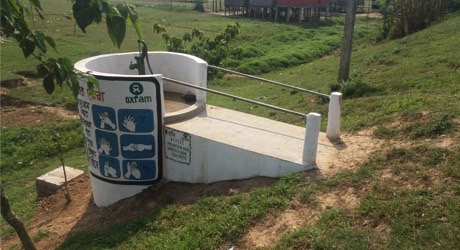
Project Outcomes
Funding from The Footprints Network has contributed towards the following project outcomes:
1. To improve food security and support the livelihood of residents
- Trained 42 farmers on mushroom cultivation
- Provided 50 marginalized farmers with food and stress tolerant seeds.
- A livestock vaccination camp in four areas enabled almost 1600 livestock to be protected from disease
- 15 landless single women were supported to start trade activities
- 20 poor households were provided with livestock
- 10 women were supported to establish silk farms
- 32 people were provided piglets
- 108 people in Darrang district were trained in flood/climate resilient cropping practices
2. To substantially improve access to safe water, sanitation, and hygiene knowledge
- 800 people are benefiting from four new raised hand pumps built above the historical flood line
- 250 people are taking advantage of two new raised toilets that ensure access during floods
- 101,000 people are benefiting from five water source rehabilitations that been carried out.
- 106 men and 85 women have been trained on how to repair hand pumps.
- 107 villagers have been trained to install biosand filters in their communities.
- 1,424 people have been trained in water health and sanitation (WASH) practices.
- 590 people have been trained on WASH in emergency settings.
- Worked with 14 schools to promote healthy sanitation, hygiene and waste management practices
3. To increase the capability of communities to anticipate and prepare for natural disasters through knowledge, awareness and training
- Training provided to 713 village disaster management committees
- Disaster training provided to 292 people
- Participatory vulnerability capacity assessments carried out in all 45 villages covered by the project. After analysis of all the gathered data, every village prepared a Community Action Plan for risk mitigation.
- Disaster risk reduction (DRR) committees established in 12 schools.
- 500 people from 12 villages involved in mock disaster drills.
4. To strengthen government engagement and ensure that government response to disasters is inclusive of local communities
- Beneficiary Review Meetings and Gram Panchayet (village council) meetings conducted to create linkages between government bodies and local communities. These linkages have resulted in government support for the construction of flood resilient toilets in disaster prone areas and community input into draft legislation.
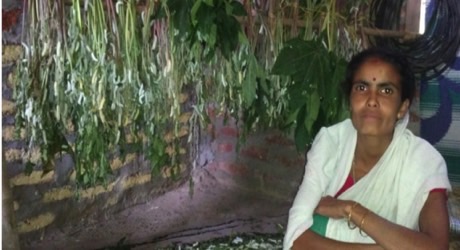
Case Study: Mrs. Anumai Bordoloi
Mrs. Anumai Bordoloi (pictured above), is a 47 year old women. She lives in Katahjari village and is illiterate. Her husband is 59 and they have an 18 year old daughter and a 20 year old son. Their village is in a very risky area during the flood season and she is from a poor family. Her husband is a wage labourer, meaning their income is not reliable and it is hard to find labour work in nearby areas. So, sometimes, Mrs. Anumai works in neighbour's houses.
Earlier, Mrs. Anumai knew of eri worms but due to lack of resources she stopped trying to grow them. Our partner connected with her and provided eri worms, ongoing support from the sericulture department and taught her how to grow food for the eri worms during the flood time.
Now she is so happy that she was able to get started with sericulture again with support from her children. She now has a successful small business and knows how to make the most of it.
Thank you so much for your support. You have made this life-saving work possible.
What Next?
This project will continue until 2020 and will produce ongoing benefits for the affected communities both in terms of their ability to provide for themselves and weather the effects of flooding.
Project Background
Residents of the Brahmaputra River Basin, in the north-eastern Indian state of Assam, face some of the greatest challenges of any community living in India. Many live in absolute poverty without basic human necessities such as food, safe drinking water, health, education and shelter. Compounding these problems is the frequent flooding which occurs in the region and sets communities back even further.
The region is not new to the devastation brought about by floods. Each year, the floods of the Brahmaputra River affect millions of people, leading to loss of lives and livelihoods, as well as displacing entire communities - sometimes several times during a single rainy season. The combined impact of floods and land erosion has resulted in some villages disappearing altogether.
Floods and other flood-related hazards have reduced the overall socio-economic development and exacerbated existing vulnerabilities within the region. Recurrent flooding has led to higher levels of poverty and hunger, and negatively impacted the social cohesion of the community. This causes a vicious cycle of increasing vulnerabilities of communities on account of their declining socio-economic conditions.
These communities are largely unprepared to face the effects of floods, so when a disaster strikes, people often lack the awareness of basic steps for preparedness like early warning and its dissemination, search and rescue, first aid and more.
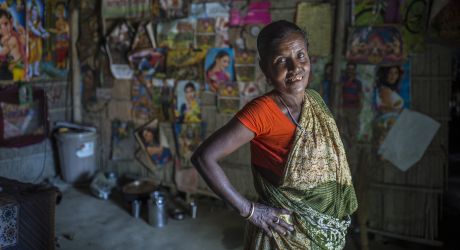
Project Overview
This Oxfam Project works to change the situation for the affected communities in Assam with a focus on water, sanitation and hygiene and sustainable food in order to help them become resilient to the shocks of flooding and so they can maintain clean water and enough food to eat all year round. Oxfam will also work with communities and local authorities to ensure they are prepared for disasters such as flooding and respond in the most effective way possible.
Working with four local partners in five districts of Assam, Oxfam aims:
- To improve food security and support the livelihood of residents.
- To substantially improve access to safe water, sanitation, and hygiene knowledge.
- To increase the capability of communities to anticipate and prepare for natural disasters through knowledge, awareness and training.
- To strengthen government engagement and ensure that government response to disasters is inclusive of local communities.
Since its launch, the programme has seen an increased emphasis on Disaster Risk Reduction (DRR) by raising awareness of its importance; developing community-based capacity in DRR initiatives; and promoting disaster preparedness.
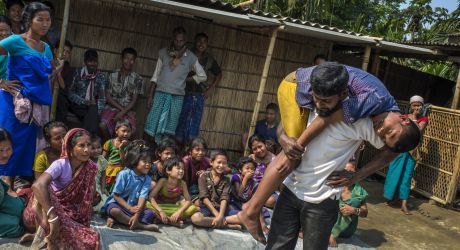
What's Covered in the Project Cost
The funds raised from The Footprints Network will contribute to the overall project; these are just some of the activities which will be made possible with your support:
- 200 farmers will be provided with technical training on flood tolerant agricultural practices such as the use of flood tolerant seeds, worm composting, floating gardens and soil and water conservation methods.
- Livelihood support which includes technical advice on System of Rice Intensification and the promotion of income generation activities such as livestock rearing, weaving, market linkages and petty trade.
- The construction of raised platforms for the protection of livelihood assets.
- Support for livestock management, including vaccination, small livestock support and livestock shelters, in three districts.
- Communities in three districts will be trained on how to make low-cost bio sand filters, which filter dangerous heavy metals from water sources.
- Running training exercises and mock drills, teaching first aid and helping to establish search and rescue plans for community members to improve emergency responses during disasters.
- Training school students and teachers to learn about disaster risk reduction and to increase their awareness of what to do when disasters strike.
- Providing communities with rescue boats to be used during floods.
Partners and Community Involvement
This project works in partnership with community-based organisations, partner NGO's, women's groups, local government and the private sector.
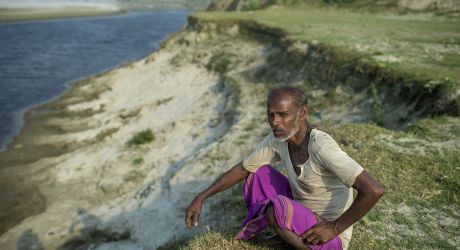
Part of A Larger Strategy
India is among the most disaster-prone countries in the world. About 57% of land in India is vulnerable to earthquake, 28% to drought and 15% to floods. These disasters affect millions - and each year thousands of people are displaced or forced to flee their homes.
In response, Oxfam India has developed its Humanitarian Response and Disaster Risk Reduction (DRR) strategy which aims to work with partners in promoting new and better ways of responding to humanitarian crises within the poorest and most disaster-prone regions in the country – including the north-east state of Assam. In these regions, there is absolute poverty in large numbers combined with social and economic discrimination of socially marginalized community groups.
Oxfam focuses on building resilience at the individual, household and community levels, because this is where impact is ultimately felt. However, there are many causes of vulnerability cannot be resolved at this level so the roles and responsibilities of states and other relevant institutions, including private companies and investors, must also be addressed.